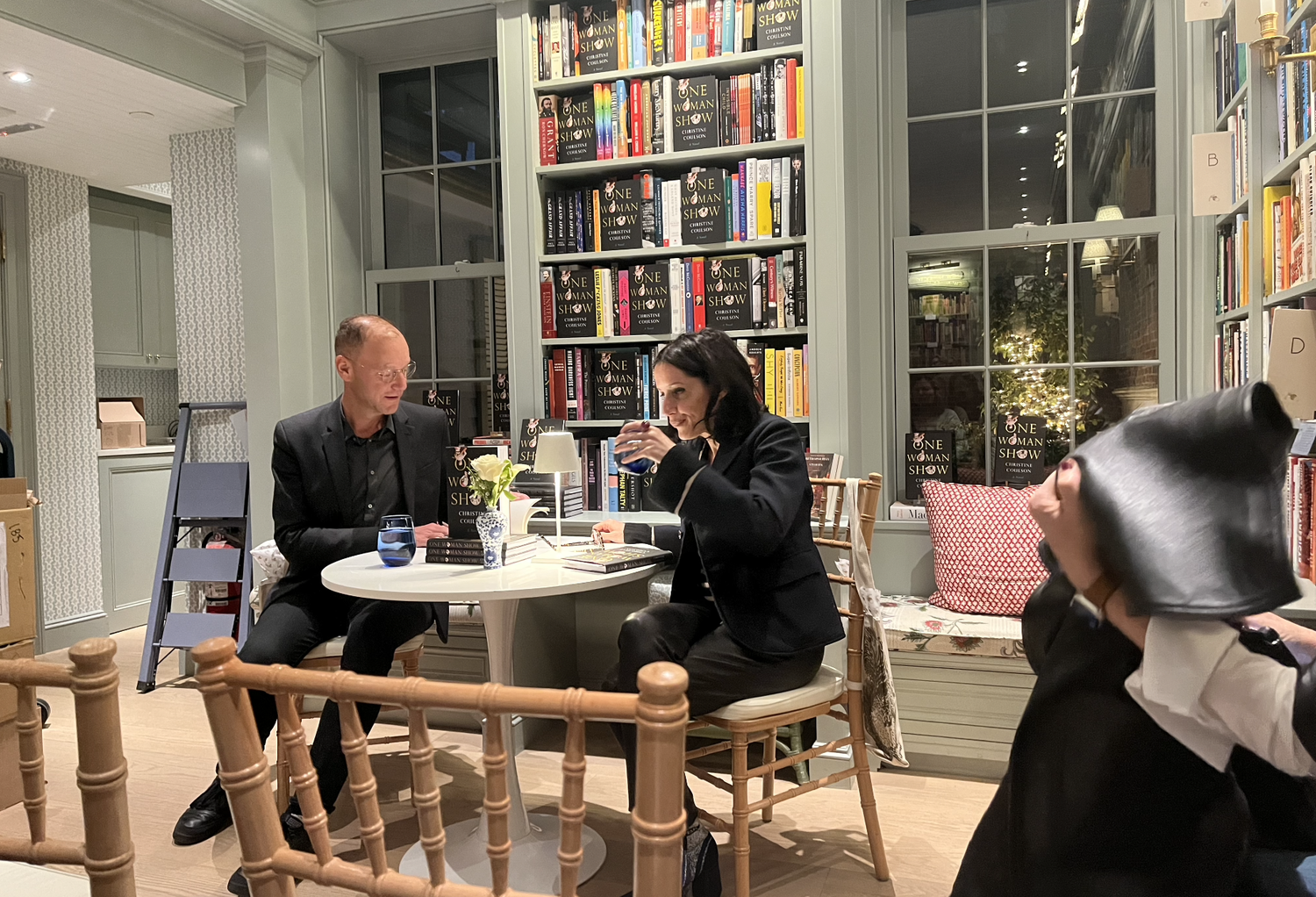
News
Cambridge Reelects Council Incumbents, Shifts Toward Center Following Progressive Departures

News
Cambridge Issues Vote of Confidence in School Committee, Reelects All Four Incumbents

News
Harvard Dean of Science Christopher Stubbs to Step Down at End of Academic Year

News
Harvard Business School Professor Francesca Gino’s Research Collaborators Launch ‘Many Co-Authors Project’ to Check Her Work

News
Harvard College to Discontinue ‘Linking’ for Blocking Groups in Housing Lottery
Christine Coulson Speaks on Writing and Art Museums at Beacon Hill Books

Selecting a topic for one’s book can stump some writers for ages, but the idea behind author Christine Coulson’s newest book, “One Woman Show,” formed in an instant.
“I can actually identity the exact moment, where I was, what was happening, who I was with, when I had the idea for this entire book,” said Coulson. “My colleague was walking down the hall, and I thought, ‘Yeah, I’d love to write a label about him.’”
“One Woman Show” is based on this concept of framing people within museum labels, just as pieces of art are accompanied by description plaques. The story centers Kitty Whitaker, a 20th-century upper-class woman, and follows the episodes of her life as if they were objects on display at the Metropolitan Museum of Art. In doing so, Coulson combines the narrative structure of a novel with the unique format of a wall text.
Coulson sat down in the cozy lobby of Beacon Hill Books & Cafe on Nov. 2 to expand on the challenges of writing within this novel format and how her experiences in the art world affected “One Woman Show.” Coulson worked for the Met for 25 years as a Senior Writer before beginning her writing journey. She was joined in conversation with Ian Alteveer, a former Met colleague who is now the Beal Family Chair of Contemporary Art at the Museum of Fine Arts, Boston.
To Coulson, the format of “One Woman Show” was the ultimate writing exercise, as it forced her to work through a rigid structure while still developing Kitty’s storyline and character. At the Met, Coulson was afforded only 75 words for an object’s wall text. Similarly, each snippet of Kitty’s life is kept short and sweet. This was an inspiring challenge for Coulson.
“It’s like poetry. It has the constraint and the rigor of using language to its fullest capacity,” said Coulson. “Every word has to work, because you only get 75.”
However, writing with a specific format also had its challenges.
“Sometimes it happens in one go. Other times, it’s days and days and days, and you wind up with 75 words, which for an author is not the most productive output,” said Coulson. “It’s like a crossword puzzle, you’re trying to figure it out, and you kind of know what’s broken and you know what’s not working.”
Playing within the confines of typical museum wall text also forced Coulson to consider the weight of each selected word. While museum language is sometimes hard to decode, Coulson also liked the idea of reclaiming the unique jargon of museum wall texts.
“I think things are not explained in museums either, and you’re expected to know them. And I liked the idea that I was going to use them, and you may not know what they mean, but you’re going to know in the context of how they’re used,” she said.
Every word takes up important real estate in “One Woman Show,” and the use of specific vocabulary invites readers to reevaluate the weight of language and discover how one unique word may take on new meaning and power when put in the perfect context.
During the talk, Coulson reflected on her last project at the Met, which was to rewrite the British gallery labels. She expanded on how this work taught her to weave consistent stories across a series of short labels.
“I wrote for the Met in a lot of different ways. I did a lot of ghostwriting. At the end of my tenure there, I was the label writer for the new British galleries, in 2020. It was during that time, I was working with a group of curators who were handling that material. But they were very different,” she said.
“The head of that project wanted to get everyone on board, so your experience in the room was not fractured,” she continued.
“I became the speechwriter for the gallery to create a consistent experience.”
While the novel’s writing may be smooth and consistent, its main character, Kitty, is a little more chaotic. Coulson expanded on how she unified Kitty’s expansive life by thinking of her writing in terms of a physical material.
“I wanted to use the language of porcelain,” Coulson said. “Porcelain is hard but fragile. It’s easily moved around and grouped with other things, it doesn’t have a lot of utility. And it’s really hard to hide its damage,” she explained. “In museums, when something is damaged, we say it has condition issues. I think it’s the most human thing. We all have condition issues.”
Finding this humanity within the strict format of a wall text reinvigorates both the language of museums and the structure of the novel. Coulson’s work is sure to invite readers to keep this idea in mind and reconsider how museums tell stories about their art.
—Staff writer Hannah E. Gadway can be reached at hannah.gadway@thecrimson.com.
Want to keep up with breaking news? Subscribe to our email newsletter.
